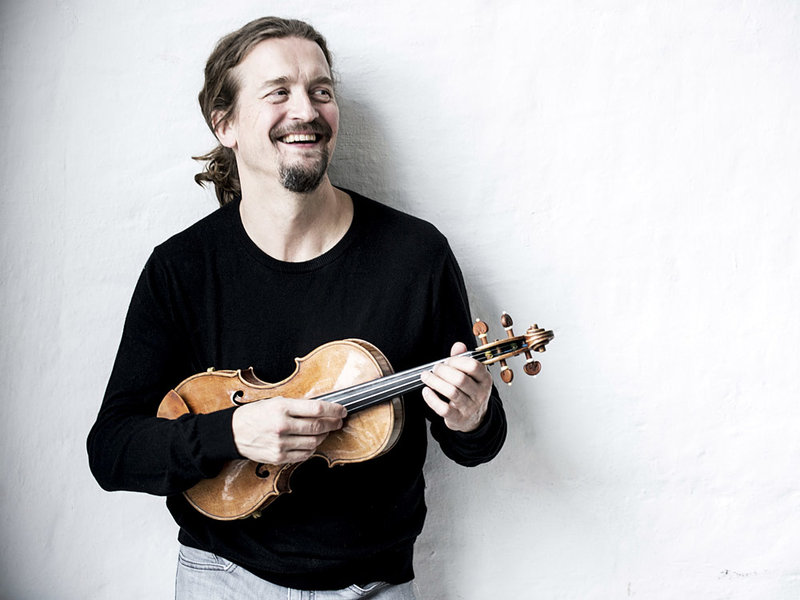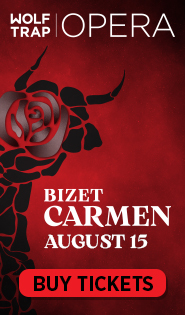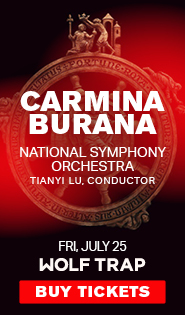Eschenbach returns to NSO with sanguine Dvořák and Schumann

Christoph Eschenbach took the podium of the National Symphony Orchestra with a meaty romantic program Friday night. The ensemble’s conductor laureate, who will turn 80 next month, led music of Dvořák and Schumann with a mellow touch that served the music well. In turn the orchestra, now in its third season under Eschenbach’s successor, Gianandrea Noseda, settled in comfortably with their former leader in the Kennedy Center Concert Hall.
The opening section of Dvořák’s Carnival Overture burst forth in ebullient joy. A prominent splatted attack in the brass at one point was quickly forgotten in the calmer middle section, with lovely solo playing in the woodwinds and from concertmaster Nurit Bar-Josef. In the energetic return of the opening music, the unity of the ensemble came apart a bit in the final accelerando, but it also generated considerable excitement.
German violinist Christian Tetzlaff took the solo part in Dvořák’s Violin Concerto, a showpiece last played by the NSO with Anne-Sophie Mutter in 2014. Tetzlaff attacked the piece with a lean, pointed tone and an unpredictable sense of rubato, darting ahead here and gracefully easing the tempo there. The technical accomplishment of the performance was astounding, with only occasional lapses of intonation, especially at the top end of the range.
Tetzlaff and Eschenbach had some trouble in the first movement agreeing on a consistent tempo, eventually reaching a consensus. The surprise ending of the movement, however, has rarely sounded so convincing, as the violinist halted the action in a cadenza-like moment with the horns. The expectation for a final orchestral statement to end the movement with a bang never materializes, and the score transitions dreamily into the second movement.
Various orchestral sections had charming chamber music spotlights with Tetzlaff in the second movement, especially the flute and oboe. In the contrasting middle section, powerful horn solos met the violinist’s broad octaves with expressive force. The finale, a smorgasbord of folkloric gestures from Czech music, featured crystalline running passages from Tetzlaff.
Here the tempo was fleet enough to make the technical achievement dizzying but with room to accelerate a bit for the exciting conclusion. The principal theme danced with a light, airy feel, and Tetzlaff dazzled in multiple double-stop and drone effects, seconded by the orchestra. Tetzlaff, last heard in Washington with the San Francisco Symphony this past March, again showed impressive range as a musician.
The highlight of the evening came in the final work, Schumann’s Second Symphony. Eschenbach continues to make a case for the composer’s sometimes maligned orchestral works, having led a strong performance of the “Rhenish” in 2018. Marked by Schumann’s immersion in the music of J.S. Bach, this symphony combines the best of the composer’s romantic tendencies with the complexities of his contrapuntal study.
In the somber introduction to the first movement, the brass floated their fanfare-like melody over the murmuring strings. The Allegro main section moved with heroic confidence, sure of itself rather than nervously edging forward, surging and receding with an organic character. The development bustled with fugal complication, and the pedal point leading to the recapitulation burned intensely.
Eschenbach reseated the orchestra according to his preference, with the two violin sections split on opposite sides, which brought out the contrapuntal interplay admirably. The bright Scherzo, set at an extreme tempo, did not always hold together securely, and Eschenbach managed to unsettle the longing appoggiaturas of the slow movement by starting the movement at a soupy pace.
The Finale, active and joyous, brimmed with confidence as Schumann alluded to a beloved melody from Beethoven’s song cycle An die ferne Geliebte. The mental decline awaiting the composer in just a few years from the composition of this symphony seemed nowhere in sight, optimism winning out over anxiety.
The program will be repeated 8 p.m. Saturday. kennedy-center.org; 202-467-4600



Posted Jan 25, 2020 at 4:35 pm by Listener
The loud splat was a trombone, not a horn. They are both “horns,” per se. But, to be specific, it was a trombone.